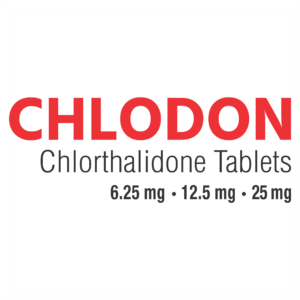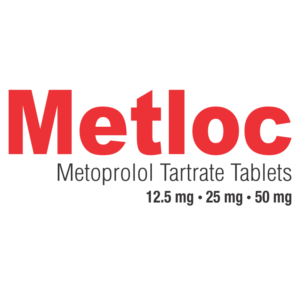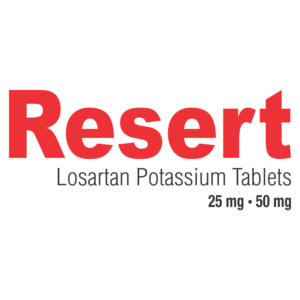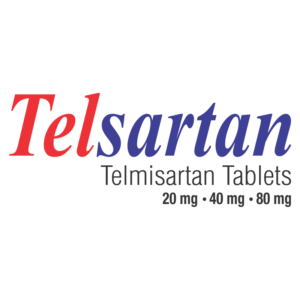CHLODON
| Generic Name | Chlorthalidone Tablets USP |
| Strength | 6.25 mg, 12.5 mg & 25 mg |
| Dosage Form | Tablet |
Description
CHLODON Tablets belong to a group of medicines called thiazide diuretics. Thiazide diuretics help to reduce the amount of water in your body. They do this by increasing the amount of water that you pass as urine. They are sometimes called ‘water tablets’.
PATIENT INFORMATION LEAFLET
Read all of this leaflet carefully before you start taking this medicine because it contains important information for you.
- Keep this leaflet. You may need to read it again.
- If you have any further questions, ask your doctor, pharmacist, or nurse.
- This medicine has been prescribed for you only. Do not pass it on to others. It may harm them, even if their signs of illness are the same as yours.
- If you get any side effects, talk to your doctor or pharmacist. This includes any possible side effects not listed in this leaflet.
What is in this leaflet
- What CHLODON is and what it is used for
- What you need to know before you take CHLODON
- How to take CHLODON
- Possible side effects
- How to store CHLODON
- Contents of the pack and other information
1. What CHLODON is and what it is used for
CHLODON Tablets belong to a group of medicines called thiazide diuretics. Thiazide diuretics help to reduce the amount of water in your body. They do this by increasing the amount of water that you pass as urine. They are sometimes called ‘water tablets’.
CHLODON Tablets are used to:
- treat high blood pressure (hypertension)
- treat heart failure
- help reduce the fluid retention that occurs with some kidney or liver diseases
- treat diabetes insipidus (a condition in which an individual produces large amounts of dilute urine and is constantly thirsty).
- What you need to know before you take CHLODON
Do not take CHLODON
- If you are allergic to CHLODON or sulphonamides such as sulfamethoxazole or any of the other ingredients of this medicine
- If you are not passing any urine at all
- If you have severe kidney or liver problems
- If you have low blood levels of potassium which can cause muscle weakness, muscle twitching, or abnormal heartbeat
- If you have low blood levels of sodium which can cause tiredness, confusion, muscle twitching, fits, or coma
- If you have high blood levels of calcium which can cause loss of appetite, tiredness or muscle weakness
- If you have ever had gout or kidney stones
- If you have Addison’s disease (which is a condition where your adrenal gland is not producing enough steroids)
- If you are taking lithium.
If any of the above applies to you, or if you are not sure, speak to your doctor or pharmacist before you take CHLODON Tablets.
Warnings and precautions
Talk to your doctor, pharmacist or nurse before taking CHLODON Tablets:
- If you suffer from any other liver or kidney problems;
- If you are on a low-salt diet;
- If you suffer from diabetes mellitus (increased levels of sugar in the blood);
- If you have high cholesterol levels;
- If you have recently had an anesthetic;
- If you are elderly.
- If you experience a decrease in vision or eye pain. These could be symptoms of fluid accumulation in the vascular layer of the eye (choroidal effusion) or an increase of pressure in your eye and can happen within hours to a week of taking CHLODON Tablets. This can lead to permanent vision loss, if not treated. If you earlier have had a penicillin or sulphonamide allergy, you can be at higher risk of developing this.
If any of the above applies to you, or if you are not sure, speak to your doctor or pharmacist before you take CHLODON Tablets.
Other medicines and CHLODON Tablets
Tell your doctor or pharmacist if you are taking, have recently taken, or might take any other medicines This applies to medicinal products subject to medical prescription or those obtained without a prescription, especially:
- Other treatments for high blood pressure or heart problems such as:
- ACE inhibitors (for example, lisinopril)
- Beta-blockers (for example propranolol hydrochloride)
- Methyldopa
- Vasodilators (for example bosentan)
- Calcium channel blockers (for example amlodipine)
- Guanethidine
- Corticosteroids such as prednisolone or betamethasone – used to treat allergic and inflammatory diseases and immune reactions
- Adrenocorticotropic hormone (ACTH) – used to treat a number of different conditions, including ulcerative colitis (a form of inflammatory bowel disease), Crohn’s disease (a form of chronic inflammatory bowel disease) and rheumatoid arthritis
- Corticosteroids such as prednisolone or betamethasone – used to treat allergic and inflammatory diseases and immune reactions
- Cytotoxic agents such as cyclophosphamide or methotrexate – used to treat cancer
- Asthma treatments such as salbutamol or formoterol
- Amphotericin – used to treat infections
- Carbenoxolone – used to treat ulcers
- Insulin and other treatments for diabetes such as chlorpropamide or glibenclamide
- Digoxin – for an irregular heartbeat
- Lithium – used to treat mental illness
- Anticholinergics such as atropine sulphate or hyoscine (butylbromide) – for abdominal or stomach spasms or cramps
- Colestyramine – used to reduce cholesterol levels and prevent heart disease
- Amantadine – used to treat Parkinson’s disease or viral infections
- Allopurinol – used to treat gout (a complex type of arthritis)
- Non-steroidal anti-inflammatories (NSAIDs) such as aspirin or indometacin – used for pain relief or rheumatism
- Ciclosporin – used to treat rheumatic disease or skin complaints or after a transplant
- Calcium salts or vitamin D – used for replacement therapy.
Please tell your doctor or pharmacist if you are taking or have recently taken/used any other medicines, including medicines obtained without a prescription.
CHLODON Tablets with food, drink and alcohol
It is best to take CHLODON Tablets in the morning with food. Swallow your tablets whole with a drink of water.
You should avoid low-salt diets. Taking CHLODON Tablets may reduce the amount of salt in your body.
If you are on a low-salt diet check with your doctor first before taking CHLODON Tablets.
Pregnancy and breast-feeding
If you are pregnant or breast-feeding, think you may be pregnant or are planning to have a baby, ask your doctor or pharmacist for advice before taking this medicine.
Pregnancy
Do not take CHLODON Tablets if you are pregnant or trying to become pregnant. Tell your doctor, immediately, if you become pregnant during treatment with CHLODON Tablets.
Breast-feeding
Do not take CHLODON Tablets if you are breast-feeding because the active substance of CHLODON. Tablets passes into breast milk and could harm your baby.
Driving and using machines
CHLODON Tablets may cause dizziness. If you feel dizzy when you start taking these tablets, do not drive or work with machinery until these effects have worn off.
- How to take CHLODON Tablets
Always take this medicine exactly as your doctor or pharmacist has told you. Check with your doctor or pharmacist if you are not sure.
Your doctor will choose a suitable starting dose for your particular condition and monitor your progress. If necessary, this dose can be increased or reduced.
Whilst you are taking CHLODON Tablets, your doctor may want to carry out a number of tests from time to time. This is quite usual and nothing to worry about.
It is best to take CHLODON Tablets in the morning with food. Swallow your tablets whole with a drink of water.
Adults
The usual doses for adults are as follows:
Treatment with low-dose chlorthalidone 6.25 mg daily, significantly reduced mean 24-h ABP as well as daytime and nighttime BP. Thus, low-dose chlorthalidone 6.25 mg could be used as monotherapy for treatment of essential hypertension
- High blood pressure:
The starting dose is 25 mg a day. Your doctor may increase this to 50 mg a day if necessary.
- Heart failure:
The starting dose is 25 mg a day. Your doctor may increase this up to 200 mg a day if necessary.
- Fluid retention associated with kidney or liver disease:
Up to 50 mg a day.
- Diabetes insipidus (a disease in which an individual produces large amounts of dilute urine and is constantly thirsty):
The starting dose is 100 mg twice a day. Your doctor may reduce your dose to 50 mg a day.
Children
Your doctor will choose a suitable dose based on your child’s age and weight.
Elderly patients or those with kidney problems
Your doctor may give you a lower dose because your body may not get rid of CHLODON Tablets as quickly as normal. If you are not sure how many tablets to take, ask your doctor or pharmacist. Do not stop taking your tablets suddenly. Ask your doctor first.
If you take more CHLODON Tablets than you should
If you accidentally take more CHLODON Tablets then you should tell your doctor immediately or contact your nearest accident and emergency department. Show any left-over medicines or the empty packet to the doctor.
If you forget to take CHLODON Tablets
If you forget to take a dose, take it as soon as possible, unless it is almost time to take the next dose. Do not take a double dose. Then go on as before. If you have any further questions on the use of this medicine, ask your doctor, pharmacist, or nurse.
- Possible Side effects
Like all medicines, this medicine can cause side effects, although not everybody gets them. If you get any of the following effects tell your doctor or pharmacist immediately:
Very common (may affect more than 1 in 10 people):
- Low blood levels of potassium which can cause muscle weakness, muscle twitching, or abnormal heartbeat
Common (may affect up to 1 in 10 people):
- Low levels of sodium which can cause tiredness, confusion, muscle twitching, fits, or coma
- Low levels of magnesium
- High blood sugar levels which can cause tiredness, weakness, or feeling thirsty
- Nettle rash
- Skin rash
- Low blood pressure which may make you feel dizzy when you stand up
- Dizziness
- Loss of appetite
- Upset stomach
- Impotence in men.
Rare (may affect up to 1 in 1,000 people):
- Increased calcium in the blood which can cause agitation, sore eyes, abdominal pain
- Sugar in the urine (this would show up when your doctor or nurse tests your urine)
- Worsening of diabetes
- Yellowing of the skin or eyes caused by liver or blood problems (jaundice)
- Increased sensitivity of your skin to sunlight
- Abnormal heartbeat the symptoms of which include palpitations and fainting
- Pins and needles
- Headache
- Feeling or being sick
- Stomach pain
- Constipation
- Diarrhoea
- Reduction in blood platelets which increases the risk of bruising or bleeding
- Severe reduction in the number of white blood cells which makes infection more likely
- An abnormally high number of eosinophils (type of white blood cell) in the blood
- Breathing problems
- Problems with your kidneys
Uncommon side effects (may affect up to 1 in 100 people)
- Gout which causes pain and swelling in the joints.
Very rare (may affect up to 1 in 10,000 people):
- low levels of chloride in the blood, symptoms include dry mouth, thirst, gastrointestinal disturbances (including nausea, vomiting), weakness, lethargy, drowsiness, restlessness, seizures, confusion, headache, muscle pains or cramps, hypotension
- inflammation of the pancreas which causes severe stomach and back pain.
Frequency unknown:
- Decrease in vision or pain in your eyes due to high pressure (possible signs of fluid accumulation in the vascular layer of the eye (choroidal effusion) or acute angle-closure glaucoma).
Reporting of side effects:
If you get any side effects, talk to your doctor, pharmacist or nurse. This includes any possible side effects not listed in this leaflet.
- How to store CHLODON Tablets
This medicinal product does not require any special storage conditions.
Keep this medicine out of the sight and reach of children.
Do not use this medicine after the expiry date which is stated on the carton or container after “EXP”. The expiry date refers to the last day of that month.
Do not throw away any medicines via wastewater or household waste. Ask your pharmacist how to throw away medicines you no longer use. These measures will help protect the environment.
- What CHLODON Tablets contain
The active substance is Chlorthalidone
CHLODON 6.25:
Each Uncoated Tablet Contains Chlorthalidone USP 6.25 mg.
CHLODON 12.5:
Each Uncoated Tablet Contains Chlorthalidone USP 12.5 mg.
CHLODON 25:
Each Uncoated Tablet Contains Chlorthalidone USP 25 mg.
What CHLODON Tablets look like and the contents of the pack
CHLODON 6.25 tablets are White, Round, Biconvex and Uncoated tablet with break line on one side. Tablets are packed into Alu-Alu Blister. The pack size is 10 x l0 tablets in a printed paper carton.
CHLODON 12.5 tablets are White, Round, Biconvex and Uncoated tablet. Tablets are packed into Alu-Alu Blister. The pack size is 10 x l0 tablets in a printed paper carton.
CHLODON 25 tablets are White, Round, Biconvex and Uncoated tablet. Tablets are packed into Alu-Alu Blister. The pack size is 10 x l0 tablets in a printed paper carton.





